Koen
Forum Replies Created
Viewing 16 posts - 1 through 16 (of 16 total)
-
KoenParticipantThere was no space to post my experience with 3D painting of the next topic. So I post it here. I (carefully) put an egg on the table. I noticed it casted a double concentric shadow, so I tried to copy it. I had to move fast, because my paint was drying rapidly. This make the contours a little bit wobbly making the egg more look like a potato ;). Nevertheless, I am happy with this first attempt.
 in reply to: Getting Comfortable with Watercolor #683571
in reply to: Getting Comfortable with Watercolor #683571 -
KoenParticipant> I tried several variations on the techniques and I watched various Youtube videos. The video of Makoccino on how to paint a simple feather in watercolor inspired me to repeat this exercise with the other techniques as well. It gave a first impression about their possibilities and limitations of the various techniques. Wet on wet creates the most wonderful color effects. Challenges were controlling the amount of water, applying the paint at the right speed and matching the contours exactly. Dry on dry is much easier to control . It looks more like a pencil drawing. Wet on dry turned out to be darker than anticipated, but it is a nice technique to use as an overlay on wet on wet, as shown on the left feather.
 in reply to: Getting Comfortable with Watercolor #683497
in reply to: Getting Comfortable with Watercolor #683497 -
KoenParticipant1. This the first water color painting I ever made. I should frame it so that I can later smile to it, remembering how clumsy my start was. I expected it to be difficult and I got immediate confirmation. Water color painting is much more intolerant to errors than drawing. No eraser to save you! 2. I went for the Rosy finch. Making the right colors was more based upon observation and gut feeling than on logic's, but in general, I could approximate the color quite quickly. I can’t remember exactly how I made them. So , I should make more notes and a sort a personal color recipe book for future. I also noted that the colors change when transferring from the palette to paper and there is also a difference between different paper types . In addition, the darkening of the color after drying is not only dependent from the color type, but also from the dilution of the paint on the palette. So I have to mix a more than sufficient amount of paint on the palette, because it is difficult to make exactly the same dilution for a second time. 3. It is also difficult to make smooth transitions between colors and shades. I cheated a bit with overlaying the water color painting with pencil patterns. The wing feathers are a disaster. I have no clue how you can make these delicate stripe patterns. How do you male fine white or pale patterns on a dark background? I tried with a white pencil, but it is still too transparent..
 in reply to: Capturing Nature’s Color Palettes #681655
in reply to: Capturing Nature’s Color Palettes #681655 -
KoenParticipantI went for the roadrunner. A good exercise for proportions. There were only a few negative spaces to support me. Mimicking the stripes and spots was also quite a challenge.
 in reply to: Giving Your Drawings Depth #678042
in reply to: Giving Your Drawings Depth #678042 -
KoenParticipantThis was a very good exercise for observation and concentration. To keep motivated , I amigined the Song sparrow singing Diana Ross’ hit: ‘Upside Down, you’re turning me’ ;) The most tricky part for me was keeping the mutual angles of the branch, the legs and bird’s posture right. But ,once again, concentrating on negative spaces helped me to move on. I also ‘discovered’ a technique to draw the complex irregular stripe patterns. I first jot many tiny dots outlining the negative space with the adjacent stripe till and then I strenghten the contour with a more solid line.
 in reply to: Drawing What You See – Upside Down Drawing #677441
in reply to: Drawing What You See – Upside Down Drawing #677441 -
KoenParticipantI challenged (and tortured!) myself with making a drawing of a picture of a Broad bellied darter I made last year. The complexity of its body with its very specific wing shapes and delicate maze pattern was overwhelming. In addition to getting the right proportions, finding the right mutual angles between the wings, the body and the reed was a particular challenge. Concentrating on negative spaces between those parts fortunately guided me through this minefield…
 in reply to: Getting the Proportions Right #676225
in reply to: Getting the Proportions Right #676225 -
KoenParticipantThis was a very exciting but also a little bit scary ecperience! I never tried drawing like this. The trick here is to focus without thinking too much. I have to cut out my mind and to rely more on my body intelligence. It is just like learning to swim or to ride a bike. It’s hard in to get on top of it, but once we are there our eyes and body will guide our mind. The motto is simple: I just keep practising and I trust that, just like a flower, this skill will unfold naturally ..

 in reply to: Capturing Behavior – Gesture Drawing #671926
in reply to: Capturing Behavior – Gesture Drawing #671926 -
KoenParticipant
@Aaron Thanks Aaron!
in reply to: Illustrating the 3D World #671901 -
KoenParticipantThis was a funny exercise! Coming back to the starting point was the biggest challenge. The larger the size of the drawing, the more difficult it becomes ..

 I had also very different results when I made the contour drawing clockwise or counter clockwise.. in reply to: Focusing on Your Subject – Blind Contour Drawing #671339
I had also very different results when I made the contour drawing clockwise or counter clockwise.. in reply to: Focusing on Your Subject – Blind Contour Drawing #671339 -
KoenParticipantI have a small grove in my garden is covered with Lesser Prewinkle. Only two yards from it, Balkan Anemones have been conquering the gravel path. The flowers of both plants have a very similar purple violet color and the plants are also similar in height. ( a few inches) . But all the rest is quite different: I noticed different shapes of the leaves (shiny and single /opposite and smooth edged versus mat and composite/ dented). Flower stem were bold versus hairy. The five petals of the Prewinkle merge into a tube shape at the base of the flower with five sepals. The Anemone has about fourteen petals, but I couldn’t find any sepals! This triggered my curiosity and after consulting some botanical websites, the mystery was solved: The ‘petals’ seem to be false and are actually colored sepals! This was a true eye opener. Without this drawing excercise, it would never come to my mind that I was looking at a flower chalice..
 in reply to: The Power of Comparison #670251
in reply to: The Power of Comparison #670251 -
KoenParticipantI sat down in my backyard. It was mostly cloudy with now and then a softening sunny spell. My garden is usually crowded with birds, but no bird showed up this time. Maybe, the timing was wrong and the birds were having their siesta. I imagined then their little stomachs filled with the food I provided a couple hours ago... But I was far from being alone: I could hear bird songs all around me: Within five minutes, I recorded 10 species. As you can see on the list, they are not American, because I live in Belgium. Awaiting any bird to show up, I was mesmerized by the rocking twigs of the hazel tree in the chilly south west breeze. Gradually, they put me in an almost hypnotic state. “Shall we droodle a bit” said the twigs. The daffodils nodded in consent and together they started to write their invisible story in the sky. My hands followed this thoughtless dance and they started sketching the garden in front of me. Suddenly, a little bug landed on my page telling me that my sketch was finished, and here it is! Not an artwork, but .. Who cares? The beauty is in the experience..
 in reply to: Opening Your Senses #668350
in reply to: Opening Your Senses #668350 -
KoenParticipant
 I ventured to draw this fossil sea urchin, I found in a quarry near home. (Original on the right side of the picture). The rounded, but asymmetric shape and the delicate scale pattern were quite a challenge to draw. Because the light on the table was diffuse, I mainly used blending for the surface shade and I added a layer with with the scale pattern in contour shading style. This is the style I would prefer for this type of objects with subtle gradations in shade. I can imagine that other shading stiles may be more suited for more dynamic objects with sharper contours and color contrasts. in reply to: Illustrating the 3D World #668232
I ventured to draw this fossil sea urchin, I found in a quarry near home. (Original on the right side of the picture). The rounded, but asymmetric shape and the delicate scale pattern were quite a challenge to draw. Because the light on the table was diffuse, I mainly used blending for the surface shade and I added a layer with with the scale pattern in contour shading style. This is the style I would prefer for this type of objects with subtle gradations in shade. I can imagine that other shading stiles may be more suited for more dynamic objects with sharper contours and color contrasts. in reply to: Illustrating the 3D World #668232 -
KoenParticipant1. What inspired you to begin nature journaling? When I bumped into this course a couple of weeks ago , I realized that my relation with nature has been fading away for a too long time. Upon browsing through the introductions and videos, vivid flashbacks from my childhood popped up. At that time, way back in the sixties, I spent my summer holidays at my uncle’s cottage in the middle of a large marshland reserve. There was also bird ring station where I helped him with catching, ringing, and registering the migrating birds. My uncle taught me the names and calls of the local birds and I remember how he encouraged me to make small sketches to memorize their identification features. And so, a new life long bird watcher was created… Not only the adventurous birding activities, but also the natural abundance and magic atmosphere of the marsh wildlife connected my soul with all living beings. Later on, as life became very busy, I dedicated my limited free time in nature on short walks while taking pictures of plants and birds. Eventually I found my way into Miksang photography. This is a meditative practice through taking pictures based on a direct and unbiased observation of pure forms and connections. (https://www.miksang.com/) . Now I am heading for my retirement, it is time to resurrect that dormant inner child. I look forward to embrace nature more intimately through a direct dialogue, free from technology and I believe that the pure act of drawing is a perfect way to accomplish this. A drawing hand triggers an authentic interaction of my body, and my heart with the land and all living beings around me. However, there is a small practical problem: The last drawing I made was more than forty years ago… So, there is a steep way to go to develop my drawing skills and that’s the place where this course comes in… Let’s go for it! 2. Which ideas or approaches do you want to try? 3. Do you have a different journaling idea, I recognize that boxes are very helpful to provide or a more clear layout. On the other hand, I also attach importance of harmonious empty spaces on the pages. Unlike drawing, I have been journaling for several years by writing (haiku) poems or contemplative pieces of prose. So, it is quite evident to combine them with my sketches. They will be a great source of inspiration for other artwork such as so called ‘haiga’. Haiga is from origin a Japanese art form where a haiku, calligraphy and a picture are combined. Both picture and poem complement each other in expressing an experience triggered by an observation in nature. This condemns me also to a course in calligraphy .. Whatsoever, my journaling style will be fluid and evolving just as nature does. Only the present moment will tell me which technique I will apply. So I guess I will experiment with a couple of styles and I will just let my style evolve as I become more skillful and mindful.in reply to: Style Your Journal Your Way #666731
-
KoenParticipant1. What inspired you to begin nature journaling? When I bumped into this course a couple of weeks ago , I realized that my relation with nature has been fading away for a way too long time. Upon browsing through the introductions and videos, vivid flashbacks from my childhood popped up. At that time, way back in the sixties, I spent my summer holidays at my uncle’s cottage in the middle of a large marshland reserve. There was also bird ring station where I helped him with catching, ringing, and registering the migrating birds. My uncle taught me the names and calls of the local birds and I remember how he encouraged me to make small sketches to memorize their identification features. And so, a new life long bird watcher was created… Not only the adventurous birding activities, but also the natural abundance and magic atmosphere of the marsh wildlife connected my soul with all living beings. Later on, as life became very busy, I dedicated my limited free time in nature on short walks while taking pictures of plants and birds. Eventually I found my way into Miksang photography. This is a meditative practice through taking pictures based on a direct and unbiased observation of pure forms and connections. (https://www.miksang.com/) . Now I am heading for my retirement, it is time to resurrect that dormant inner child. I look forward to embrace nature more intimately through a direct dialogue, free from technology and I believe that the pure act of drawing is a perfect way to accomplish this. A drawing hand triggers an authentic interaction of my body, and my heart with the land and all living beings around me. However, there is a small practical problem: The last drawing I made was more than forty years ago… So, there is a steep way to go to develop my drawing skills and that’s the place where this course comes in… Let’s go for it! 2. Which ideas or approaches do you want to try? 3. Do you have a different journaling idea, I recognize that boxes are very helpful to provide or a more clear layout. On the other hand, I also attach importance of harmonious empty spaces on the pages. Unlike drawing, I have been journaling for several years by writing (haiku) poems or contemplative pieces of prose. So, it is quite evident to combine them with my sketches. They will be a great source of inspiration for other artwork such as so called ‘haiga’. Haiga is from origin a Japanese art form where a haiku, calligraphy and a picture are combined. Both picture and poem complement each other in expressing an experience triggered by an observation in nature. This condemns me also to a course in calligraphy .. Whatsoever, my journaling style will be fluid and evolving just as nature does. Only the present moment will tell me which technique I will apply. So I guess I will experiment with a couple of styles and I will just let my style evolve as I become more skillful and mindful.in reply to: Style Your Journal Your Way #666723
-
KoenParticipant
 The result of this first attempt after forty years was better than I hoped. Drawing is like swimming. The mind believes it has forgotten everything, but the body knows better 😉 . I only used a pencil because I am a complete newbie with water color. Drawing from a static photo gives me time to find out the right proportions. I discovered details I would not notice when taking picture, such as the structure of the plumage of a folded wing. This was also one of the most difficult parts to draw together with the talons. I don't have the proportions right yet: The head is too large compared to the body. The warbler on the photo is more relaxed than my warbler. It looks like it is about to fly away any moment. Drawing the twigs and the leaves was easier. I think it is because leaves allow more freedom in interpretation compared to a bird. Drawing life birds is definitely another challenge. You have in most cases only a few seconds to draw the main features and the rest has to be completed by my memory , my familiarity with the species and by previous exercises on drawing the same species in nature and from photo's ...In short I believe that drawing from photo's and from life birds in the field complement each other. in reply to: Jump Right in! #667703
The result of this first attempt after forty years was better than I hoped. Drawing is like swimming. The mind believes it has forgotten everything, but the body knows better 😉 . I only used a pencil because I am a complete newbie with water color. Drawing from a static photo gives me time to find out the right proportions. I discovered details I would not notice when taking picture, such as the structure of the plumage of a folded wing. This was also one of the most difficult parts to draw together with the talons. I don't have the proportions right yet: The head is too large compared to the body. The warbler on the photo is more relaxed than my warbler. It looks like it is about to fly away any moment. Drawing the twigs and the leaves was easier. I think it is because leaves allow more freedom in interpretation compared to a bird. Drawing life birds is definitely another challenge. You have in most cases only a few seconds to draw the main features and the rest has to be completed by my memory , my familiarity with the species and by previous exercises on drawing the same species in nature and from photo's ...In short I believe that drawing from photo's and from life birds in the field complement each other. in reply to: Jump Right in! #667703 -
KoenParticipant1. What inspired me to begin nature journaling? When I bumped into this course a couple of weeks ago , I realized that my relation with nature has been fading away for a too long time. Upon browsing through the introductions and videos, vivid flashbacks from my childhood popped up. At that time, way back in the sixties, I spent my summer holidays at my uncle’s cottage in the middle of a large marshland reserve. There was also bird ring station where I helped him with catching, ringing, and registering the migrating birds. My uncle taught me the names and calls of the local birds and I remember how he encouraged me to make small sketches to memorize their identification features. And so, a new life long bird watcher was created… Not only the adventurous birding activities, but also the natural abundance and magic atmosphere of the marsh wildlife connected my soul with all living beings. Later on, as life became very busy, I dedicated my limited free time in nature on short walks while taking pictures of plants and birds. Eventually I found my way into Miksang photography. This is a meditative practice through taking pictures based on a direct and unbiased observation of pure forms and connections. Now I am heading for my retirement, it is time to resurrect that wondering child. I look forward to embrace nature more intimately through a direct dialogue, free from technology and I believe that the pure act of drawing is a perfect way to accomplish this. A drawing hand triggers an authentic interaction of my body, and my heart with the land and all living beings around me. However, there is a small practical problem: The last drawing I made was more than forty years ago… So, there is a steep way to go to develop my drawing skills and that’s the place where this course comes in… Let’s go for it! 2. Some ideas or approaches I have now I learnt from the examples that boxes are helpful to provide or a more clear layout. On the other hand, I feel that a harmonious distribution of empty spaces is also important. Unlike drawing, I have been journaling for several years by writing (haiku) poems or contemplative pieces of prose. So, it is quite evident to combine them with my sketches. They will be a great source of inspiration for other artwork such as so called ‘haiga’. Haiga is from origin a Japanese art form where a haiku, calligraphy and a picture are combined. Both picture and poem complement each other in expressing an experience triggered by an observation in nature. Whatsoever, my journaling style will be fluid and evolving just as nature does. Only the present moment will tell me which technique I will apply. So I guess I will experiment with a couple of styles and I will just let my style evolve as I become more skillful and mindful. Koen D.in reply to: Style Your Journal Your Way #666906
Viewing 16 posts - 1 through 16 (of 16 total)
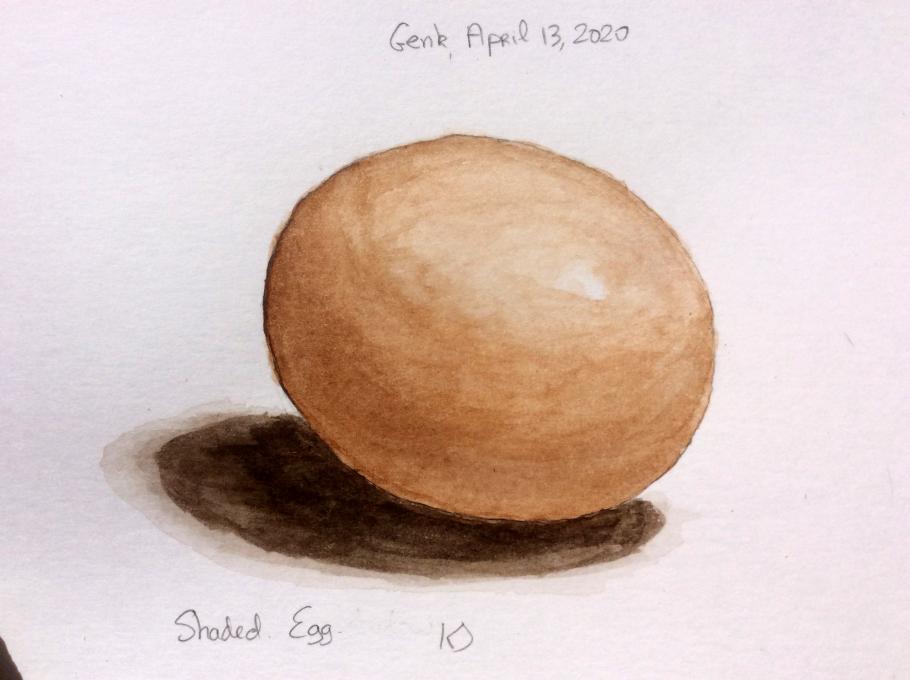
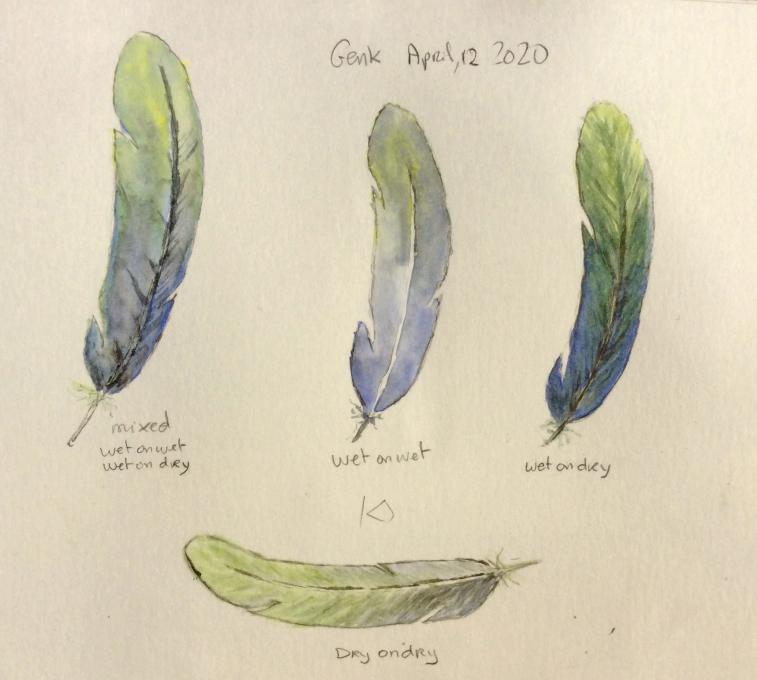
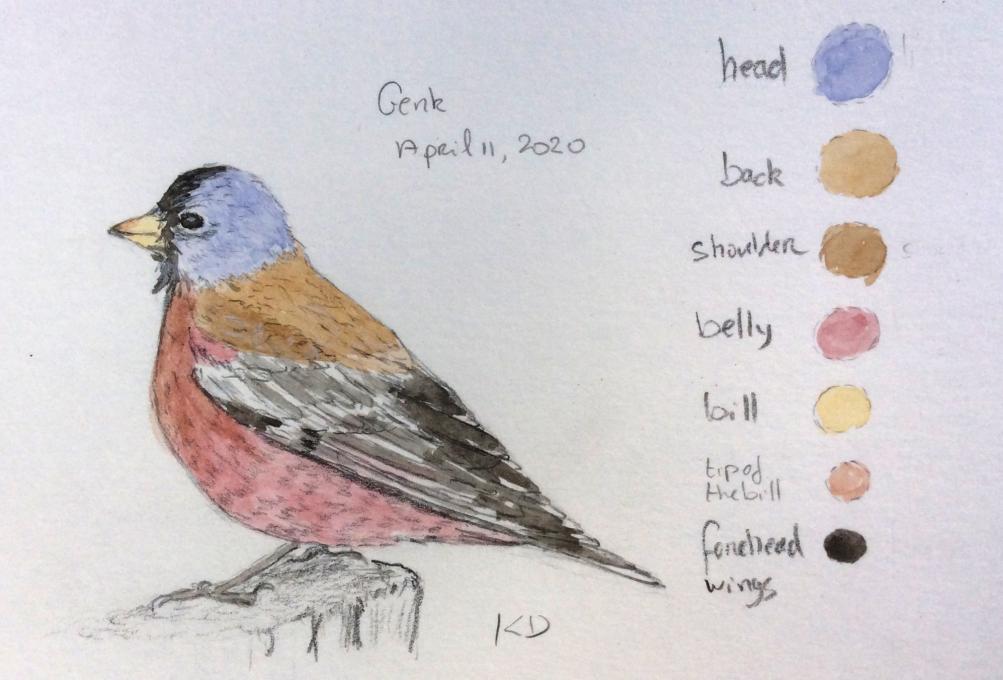



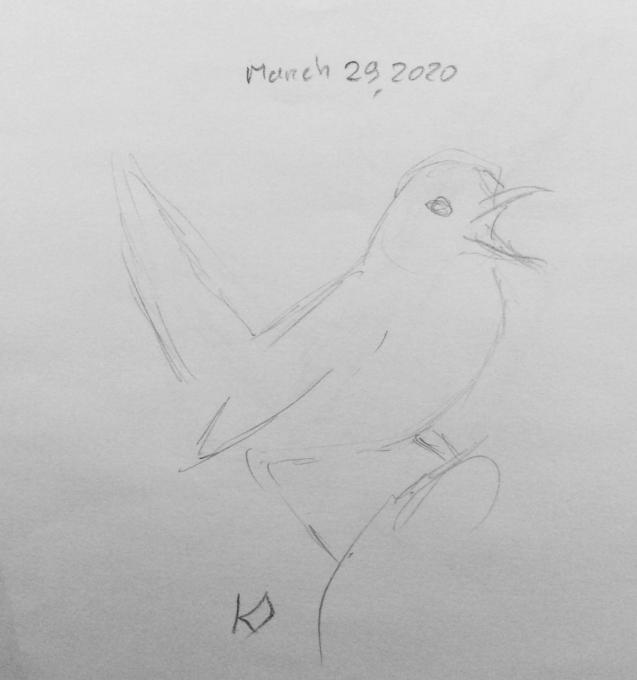
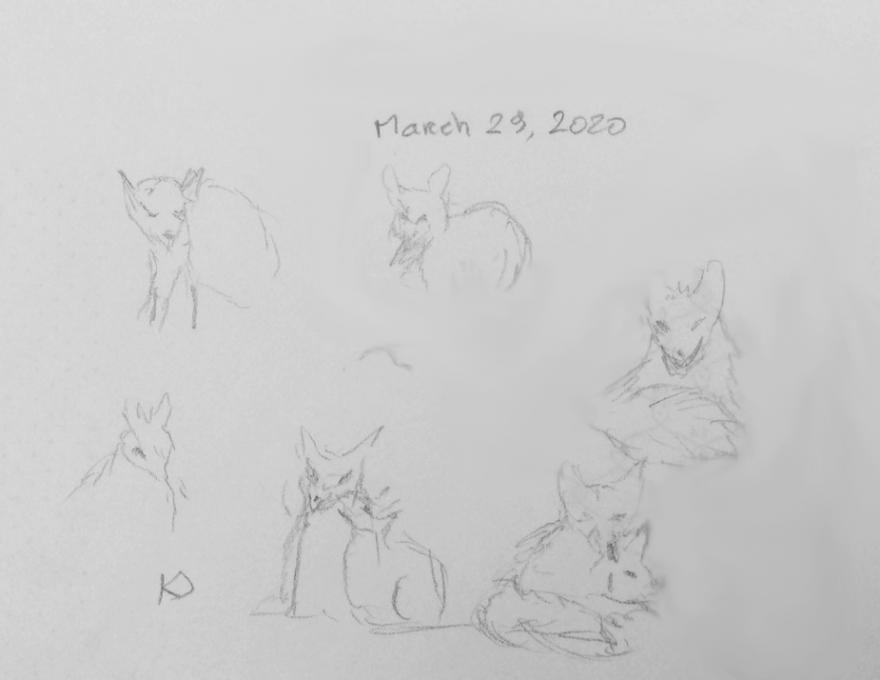
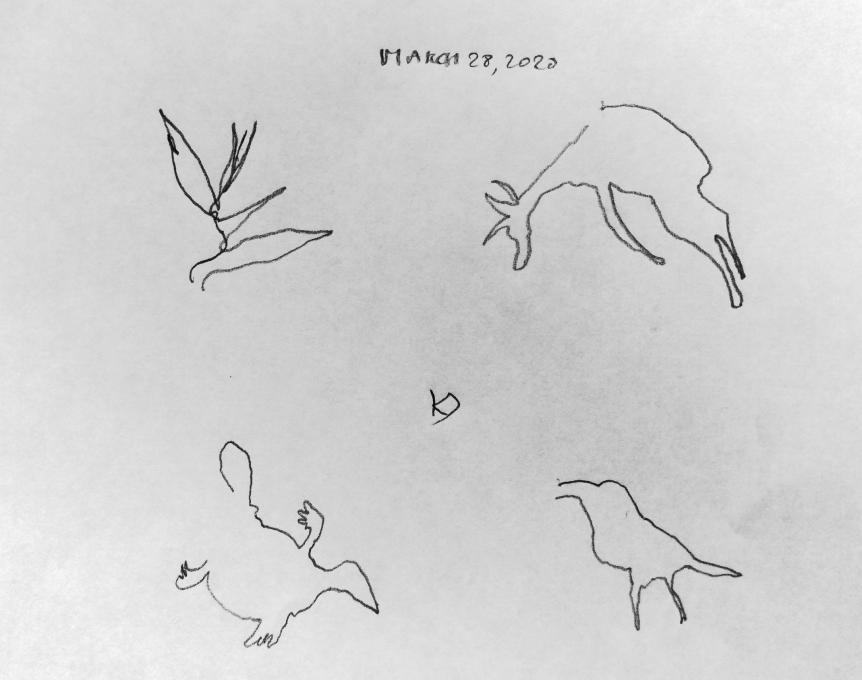
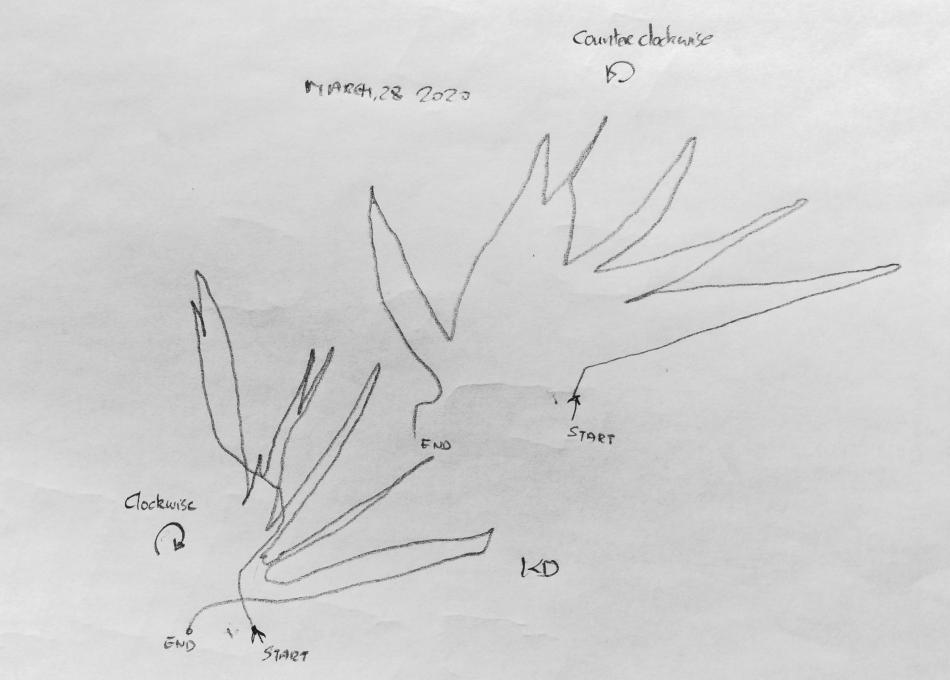 I had also very different results when I made the contour drawing clockwise or counter clockwise..
I had also very different results when I made the contour drawing clockwise or counter clockwise.. 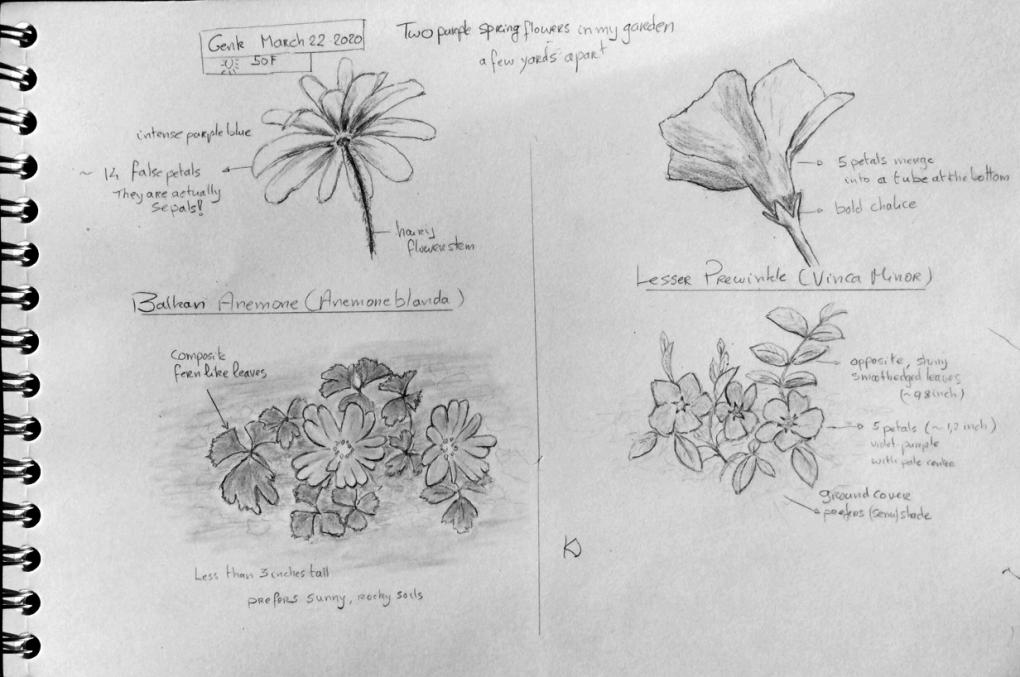

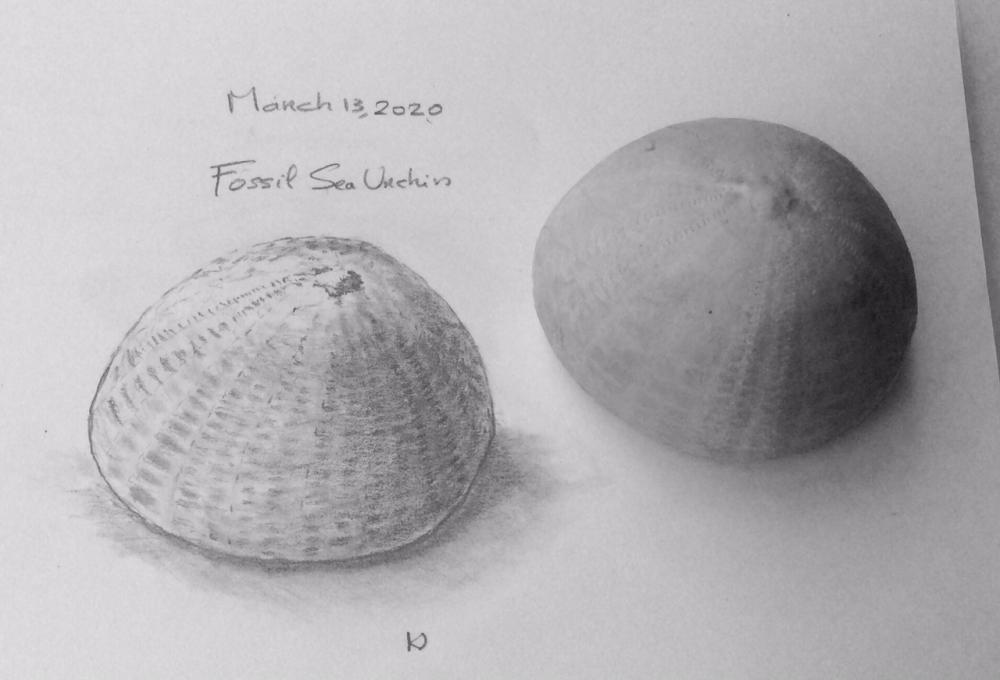 I ventured to draw this fossil sea urchin, I found in a quarry near home. (Original on the right side of the picture). The rounded, but asymmetric shape and the delicate scale pattern were quite a challenge to draw. Because the light on the table was diffuse, I mainly used blending for the surface shade and I added a layer with with the scale pattern in contour shading style. This is the style I would prefer for this type of objects with subtle gradations in shade. I can imagine that other shading stiles may be more suited for more dynamic objects with sharper contours and color contrasts.
I ventured to draw this fossil sea urchin, I found in a quarry near home. (Original on the right side of the picture). The rounded, but asymmetric shape and the delicate scale pattern were quite a challenge to draw. Because the light on the table was diffuse, I mainly used blending for the surface shade and I added a layer with with the scale pattern in contour shading style. This is the style I would prefer for this type of objects with subtle gradations in shade. I can imagine that other shading stiles may be more suited for more dynamic objects with sharper contours and color contrasts.  The result of this first attempt after forty years was better than I hoped. Drawing is like swimming. The mind believes it has forgotten everything, but the body knows better 😉 . I only used a pencil because I am a complete newbie with water color. Drawing from a static photo gives me time to find out the right proportions. I discovered details I would not notice when taking picture, such as the structure of the plumage of a folded wing. This was also one of the most difficult parts to draw together with the talons. I don't have the proportions right yet: The head is too large compared to the body. The warbler on the photo is more relaxed than my warbler. It looks like it is about to fly away any moment. Drawing the twigs and the leaves was easier. I think it is because leaves allow more freedom in interpretation compared to a bird. Drawing life birds is definitely another challenge. You have in most cases only a few seconds to draw the main features and the rest has to be completed by my memory , my familiarity with the species and by previous exercises on drawing the same species in nature and from photo's ...In short I believe that drawing from photo's and from life birds in the field complement each other.
The result of this first attempt after forty years was better than I hoped. Drawing is like swimming. The mind believes it has forgotten everything, but the body knows better 😉 . I only used a pencil because I am a complete newbie with water color. Drawing from a static photo gives me time to find out the right proportions. I discovered details I would not notice when taking picture, such as the structure of the plumage of a folded wing. This was also one of the most difficult parts to draw together with the talons. I don't have the proportions right yet: The head is too large compared to the body. The warbler on the photo is more relaxed than my warbler. It looks like it is about to fly away any moment. Drawing the twigs and the leaves was easier. I think it is because leaves allow more freedom in interpretation compared to a bird. Drawing life birds is definitely another challenge. You have in most cases only a few seconds to draw the main features and the rest has to be completed by my memory , my familiarity with the species and by previous exercises on drawing the same species in nature and from photo's ...In short I believe that drawing from photo's and from life birds in the field complement each other.